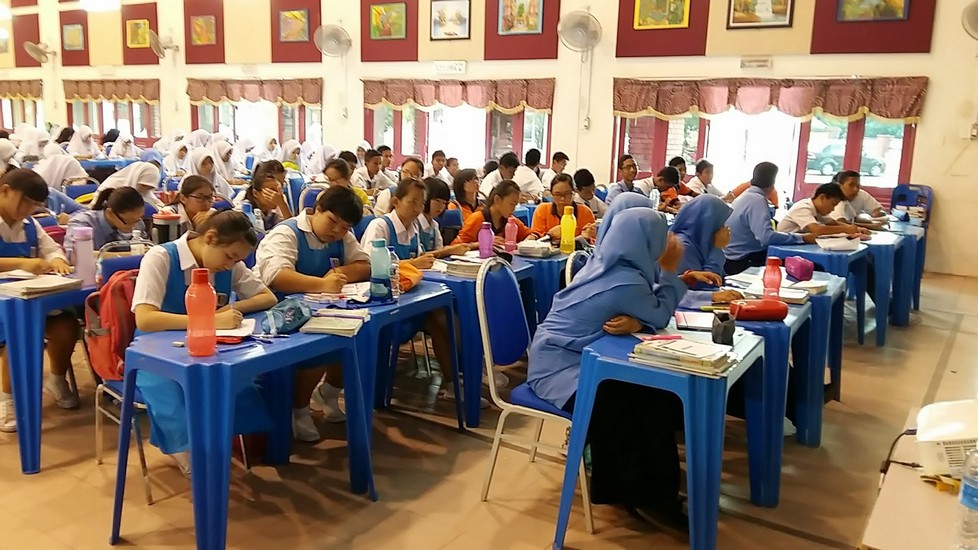School Connectedness is a sense of belonging at school. It is for students to believe their parents, teachers, school staff, and other students in their school care about them and about how well they are learning (American Psychological Association). School connectedness is an important protective factor for school going children and adolescent. Teenagers who feel connected to their school are less likely to engage in many risk behaviors, e.g. including drug and alcohol use, involvement in violence and gangsterism, and early sexual initiation. They are also more likely to do better academically, attend school more regularly, stay in school longer and make healthy choices.
School connectedness is particularly important for teenagers who are at increased risk to be isolated from others, for example, a student who is homeless or frequently misses school.

What Parents/ Teachers Can Do To Improve School Connectedness?
- Encourage teenagers to talk openly with parents, teachers, counsellors, and other school staff.
- Strong family involvement.
- Help your teen with homework, and teach your teen how to use his or her time well. Ensure your teen has adequate books and stationery, and conducive place to study.
- Supportive school personnel.
- Inclusive school environments.
- Encourage your child to participate in school activities.
- Attend parent-teacher-student conferences. Talk to teachers, attend school meetings. Support what the school expects. Find out how your teen behave in school.
- Meet regularly with your teen’s teachers to discuss his or her grades, behaviour, and accomplishments.
- If possible, help in your teen’s classroom, attend after school events, or participate in a school committee.
- Offer to share important aspects of your culture with your teen’s class.
- Get involved with your teen’s school to help plan school policies and school-wide activities.
- Encourage your teen to help adults at home, at school, and in the community.
- Talk with teachers and school staff to suggest simple changes that can make the school a more pleasant and welcoming place.
What schools can do to improve school connectedness?
(Centers for Disease Control and Prevention (2009))
- Create decision-making processes that facilitate student, family and community engagement, academic achievement and staff empowerment.
- Provide education and opportunities to enable families to be actively involved in their children’s academic and school life.
- Provide students with the academic, emotional and social skills necessary to be actively engaged in school.
- Use effective classroom management and teaching methods to foster a positive learning environment.
- Provide professional development and support for teachers and other school staff to enable them to meet the cognitive, emotional and social needs of children and adolescents.
- Create trusting and caring relationships that promote open communication among administrators, teachers, staff, students, families and communities.
Conclusion
School connectedness is a vital protective factor for children and adolescent. Concerted efforts from parents, family, schools are important to help them to attain it.

Reference:
- https://www.cdc.gov/healthyyouth/protective/pdf/connectedness_parents.pdf”>https://www.cdc.gov/healthyyouth/protective/pdf/connectedness_parents.pdf
- Resnick, M., Bearman, P, Blum R., Bauman K., Harris K., Jones, J, et al.(1997). Protecting adolescents from harm: findings from the National Longitudinal Study on Adolescent Health. JAMA 1997; 278(10):823-832.
- Centers for Disease Control and Prevention. (2009). Fostering School Connectedness Information for School Districts and School Administrators.Retrieved from: http://www.cdc.gov/healthyyouth/protective/pdf/connectedness_administrators.pdf”>http://www.cdc.gov/healthyyouth/protective/pdf/connectedness_administrators.pdf (PDF, 1.72MB)
- http://www.apa.org/pi/lgbt/programs/safe-supportive/school-connectedness/default.aspx”>http://www.apa.org/pi/lgbt/programs/safe-supportive/school-connectedness/default.aspx
| Last Reviewed | : | 06 September 2017 |
| Writer | : | Dr. Harlina Bt. Bahar |
| Accreditor | : | Dr. Sheila Marimuthu |







